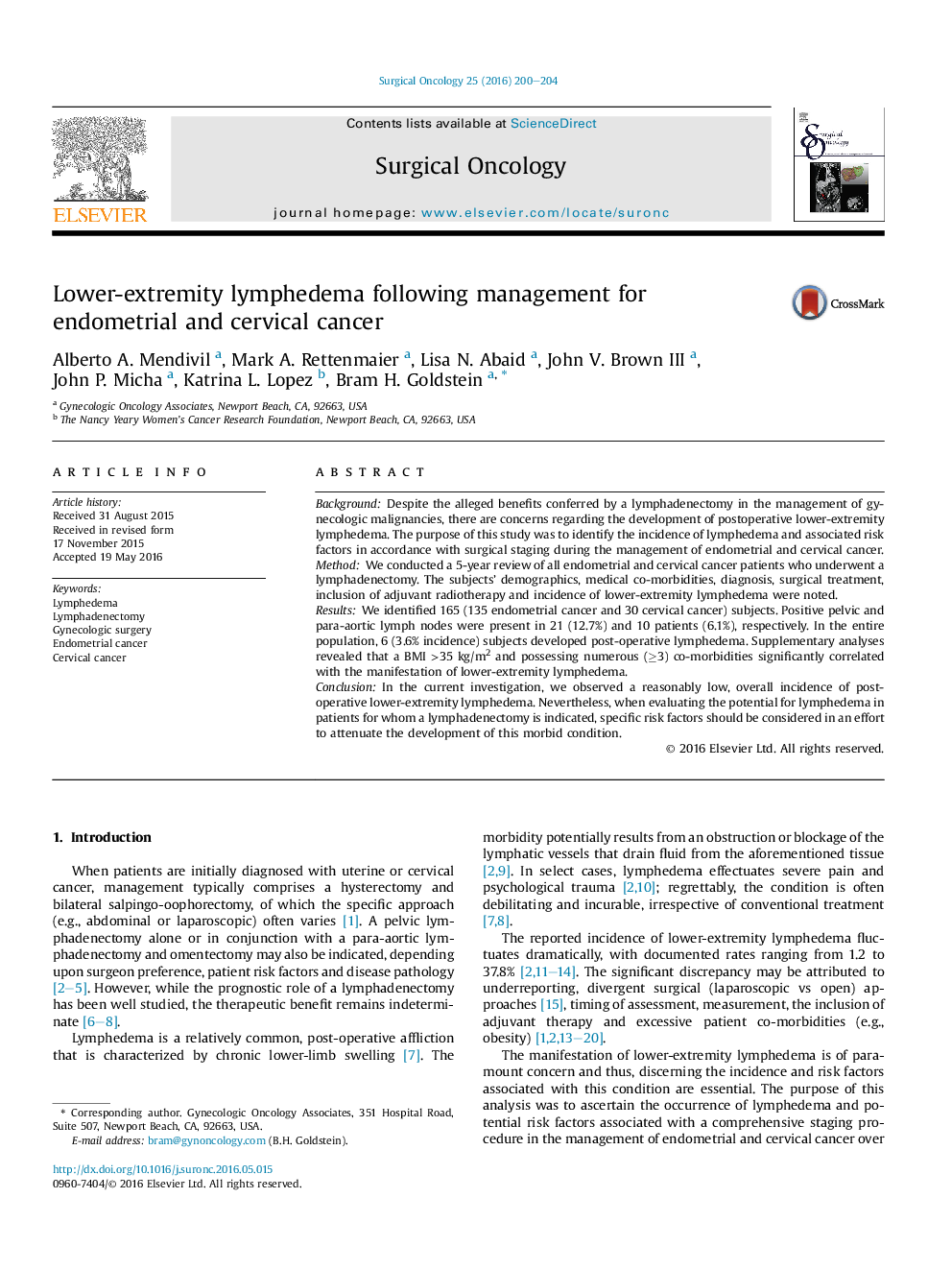| کد مقاله | کد نشریه | سال انتشار | مقاله انگلیسی | نسخه تمام متن |
|---|---|---|---|---|
| 6193838 | 1259167 | 2016 | 5 صفحه PDF | دانلود رایگان |
- An excessive BMI was associated with an increased risk for lymphedema.
- A higher number of resected lymph nodes was a risk factor for lymphedema.
- Numerous co-morbidities correlated with the manifestation of lymphedema.
BackgroundDespite the alleged benefits conferred by a lymphadenectomy in the management of gynecologic malignancies, there are concerns regarding the development of postoperative lower-extremity lymphedema. The purpose of this study was to identify the incidence of lymphedema and associated risk factors in accordance with surgical staging during the management of endometrial and cervical cancer.MethodWe conducted a 5-year review of all endometrial and cervical cancer patients who underwent a lymphadenectomy. The subjects' demographics, medical co-morbidities, diagnosis, surgical treatment, inclusion of adjuvant radiotherapy and incidence of lower-extremity lymphedema were noted.ResultsWe identified 165 (135 endometrial cancer and 30 cervical cancer) subjects. Positive pelvic and para-aortic lymph nodes were present in 21 (12.7%) and 10 patients (6.1%), respectively. In the entire population, 6 (3.6% incidence) subjects developed post-operative lymphedema. Supplementary analyses revealed that a BMI >35 kg/m2 and possessing numerous (â¥3) co-morbidities significantly correlated with the manifestation of lower-extremity lymphedema.ConclusionIn the current investigation, we observed a reasonably low, overall incidence of postoperative lower-extremity lymphedema. Nevertheless, when evaluating the potential for lymphedema in patients for whom a lymphadenectomy is indicated, specific risk factors should be considered in an effort to attenuate the development of this morbid condition.
Journal: Surgical Oncology - Volume 25, Issue 3, September 2016, Pages 200-204
